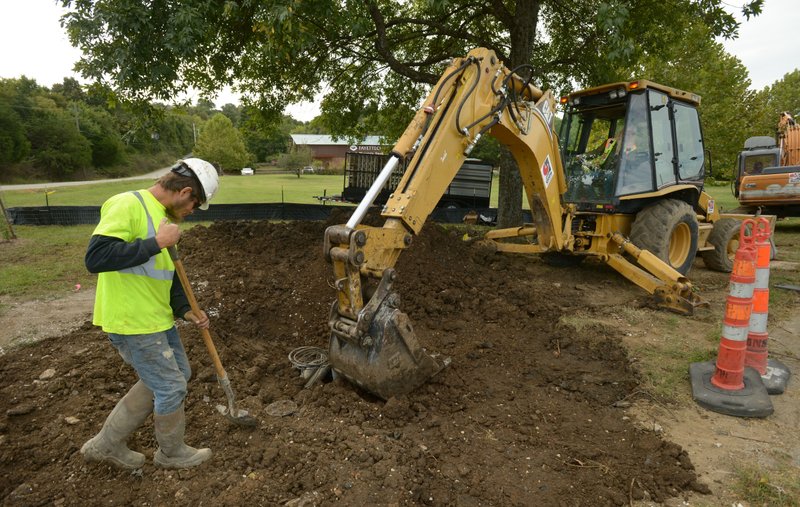FAYETTEVILLE -- The City Council will have a 20-year water plan to consider addressing everything from dead-end pipelines to an 11-mile, $36 million connection to Beaver Lake.
The Water and Sewer Committee, consisting of half the City Council, on Tuesday forwarded the plan from engineers McGoodwin, Williams and Yates to the full council. The plan takes into account the nearly 750 miles of pipes that make up the city's water distribution system and projects needs. Fayetteville's water system also serves Farmington, Goshen, Greenland, Wheeler and parts of Johnson.
Water plan goals
• Accommodate projected growth.
• Maintain high water quality and adequate pressure.
• Provide adequate fire flow.
• Comply with future regulations.
Source: McGoodwin, Williams and Yates
The engineers built a water model using billing records and activity in thousands of pipes to make those projections. That, combined with population growth and anticipated development patterns, gives engineers an idea of where new pipes should go and the ones most in need of an upgrade, said Brad Hammond and Chris Hall with McGoodwin, Williams and Yates.
"We look where it's most likely for development to occur, not where it should occur," Hammond said. "It's as objective as we can make it."
The Arkansas Department of Environmental Quality recommends cities upgrade a water plan every five years. Fayetteville last updated its plan in 2011, also then by McGoodwin, Williams and Yates.
The three-phase plan is meant to serve as a road map, not a mandate, because any large development could significantly change the needs of an area, Hall said. For example, a new chicken processing plant could use a half a million gallons a day, requiring a new tank, pump station and water lines so surrounding neighborhoods could maintain proper flow.
The first phase of the plan is ready to get going. This year's budget included a $3 million project to build a tank somewhere near Gulley Road serving northeastern Fayetteville and Goshen. That project has been rolled over with two other projects, one to build a tank near Township Avenue and another to install necessary sustaining valves, in order to accommodate growth on the city's east side, Utilities Director Tim Nyander said.
Earlier this month, the city selected McGoodwin, Williams and Yates to take on the three-prong project. A contract still has to be negotiated.
Nyander estimated the three projects combined likely will cost $8-10 million. Design should take several months, with at least two years needed to build.
Chief Financial Officer Paul Becker said the projects would be included in the Capital Improvements Plan and could be paid for temporarily through reserve. A bond issue would serve as a last resort. The water and sewer fund has very little debt, he said.
"Usually a system this size would have a lot more debt than we carry," Becker said.
Council Member Mark Kinion, who serves as chairman of the committee, said the plan as a whole represents a long-term vision of what to expect with some milestones to plan around for financing.
"Of course, we can never look into the future and know exactly," he said.
The second phase of the plan mostly involves building a water line on the southeast edge of town leading into Elkins. Estimated cost for that project is $2.7 million.
Phase III would have 11 miles of line connect the west side of town to the Beaver Water District by 2037. Two lines connect the city to the lake, but based on projections, a third one is needed, Hammond and Hall said.
"Those lines are aging and are going to be reaching capacity at some point," Hammond said.
Beaver Water District has been acquiring easements as a proactive measure for a future western corridor, he said.
All in all, the entire plan calls for more than $47 million of work over the next 20 years. The City Council will take up the plan at a later date.
NW News on 11/15/2017


